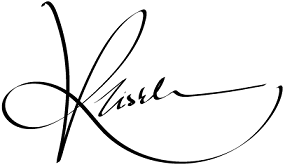When it comes to placing a monetary value on your work that you had spent considerable time and effort on, it is quite understandable to get caught in an internal battle between what you THINK you work is worth and its actual market value. The price becomes a matter of self-esteem, self-worth and what the market is willing to pay. It is a delicate dance in which a balance must be found for all the factors involved and also having your work valued for the amount that it rightfully deserves. To help you strike this balance, I present you with 5 things to consider when pricing your artwork, so you get the returns that you rightfully deserve:
The Cost
Just like pricing anything, it is imperative to take into account the cost of producing that particular item. This cost could be of the materials that were used, the rent of the space in which it was created in and the time that was spent in its production. All are things that need to be factored into when setting the baseline of how much one should pay to acquire one of your pieces.
What does your clientele say?
This is a consideration that needs to be made when approached for a commission or when you have a dedicated clientele who are always interested in purchasing your work. You can get an understanding of how much your clients are willing to pay and make adjustments to your prices accordingly. In case of a commission, based on the amount of work that is required for the artwork and what the client is asking for, you can create a pricing strategy that will be suitable for your efforts.
What does the market say?
The art trade market can be temperamental at times and as a working artist, it is imperative to have a finger on the pulse of what the demand and supply is. Finding the perfect balance of what you offer in terms of art and what the market is willing to pay is a skill that requires practice and being up to date with the market trends. This can be done by reading art trade journals and publications on a frequent basis, to avoid getting out of touch. With this knowledge, you can factor in the market and its changes in your pricing strategy.
Your expectations
As artists, we have certain expectations on the return that we will get for our work. These expectations are a product of our perceived efforts in producing that artwork, our self-esteem and the sentimental value that we have placed on a particular piece. In order to be somewhat satisfied with what we have priced our work at, we have to take into account of our expectations and what we think our work deserves. It is never a good idea to under value your work just to secure a sale, as this not only chips at your self-worth but also harms your market credibility.
Your dependency on the art sales
Your art can be a fulltime job or a side business that produces a supplementary income for you to benefit from. Both of these scenarios can lead to different pricing motivations that also influence the amount of art you produce. If you are completely reliant on your art for a living, you are compelled to compromise on your price to secure a sale and will have to produce a higher volume of artwork in order to build on your income as an artist. However, these pressures are bypassed when your art is more of a passion project that produces a side income as a bonus. Therefore, you need to consider how much you rely on the proceeds of your sales as an income when setting a price to cover your living expenses.
With all of these factors considered, we should be able to come to a price for our artwork that reflects what we feel our art is worth and also complements what the position of the art trade market is. We should always remember; our pricing is only justified when it is done based on facts instead of feelings.
Shop my artwork collection here.
Check my digital artwork collection here.


